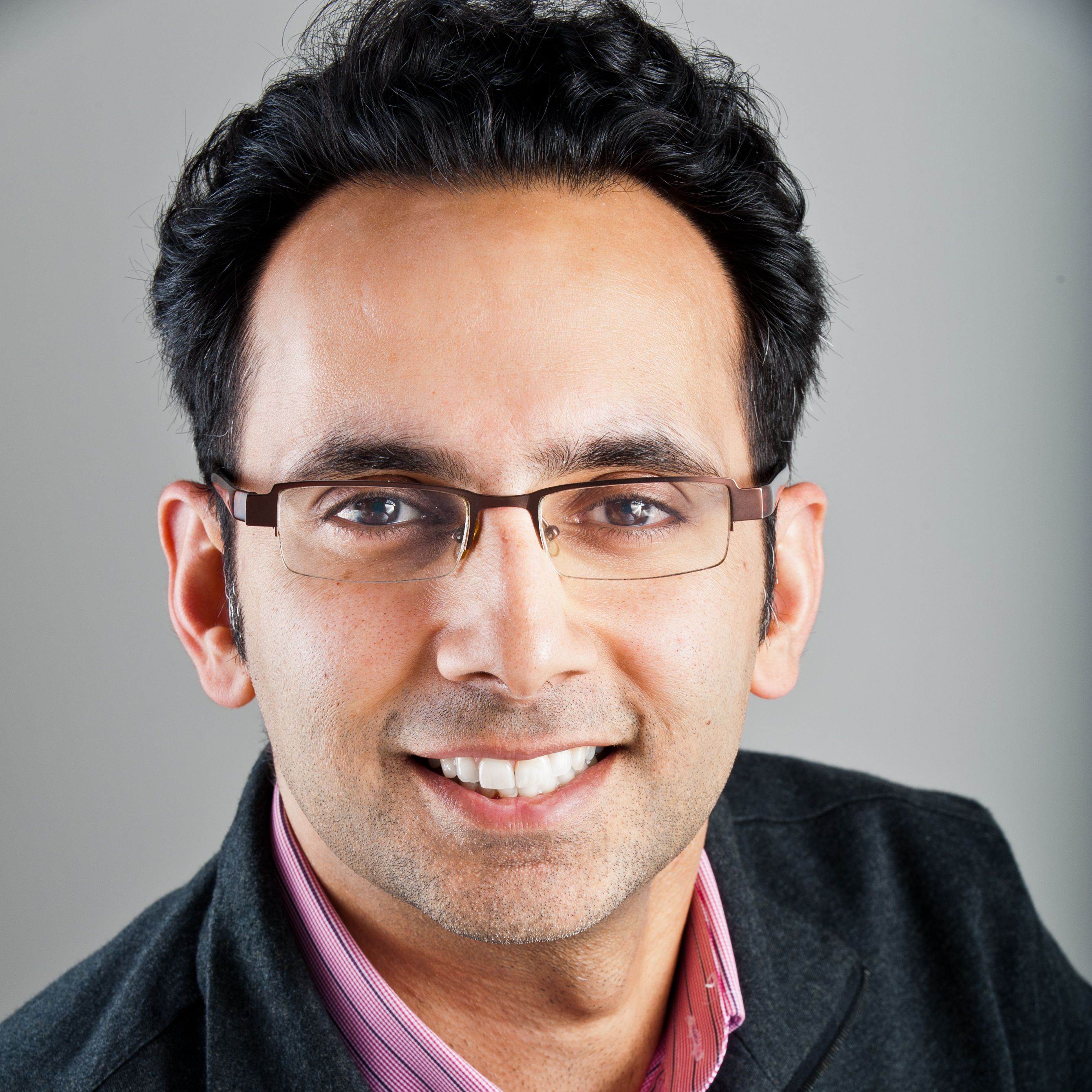Closing the Financial Capability Gap: A Call to Action for Private Markets
Written by Asheesh Advani, Junior Achievement (JA) WorldwideIn recent years, the pace of market-driven innovation in financial services has been breathtaking. Products and services such as prepaid cards, mobile money, payment technologies, and credit score services are making saving, borrowing, and moving money easier than ever. Some of the entrepreneurs driving these innovations have recognized that serving the entire market — lower-income, lower-wealth, and other underserved households included — can be good business when done in a manner that respects the needs and intelligence of these consumers. These innovations can also be pathways into the formal banking system.
To build financial health, access to good products and services must be combined with the knowledge and behavior that enables people to make wise use of financial products. Both financial literacy and capability are essential elements to financial wellness, particularly for new products that use technology to lower the cost of reaching customers. Monitor’s 2012 “Bridging the Gap” report detailed this boom in access to finance for the world’s poor, and sounded the alarm about the growing financial capability gap: “There is growing consensus that efforts to simply improve financial access without also improving financial capability are inadequate at best, and unsustainable and potentially harmful at worst.”1
In this essay, I suggest that closing the financial capability gap — empowering individuals who lack the know-how, confidence, and access to the products that will help them achieve financial well-being — is simultaneously an investment opportunity, a value-creating business opportunity, and a critical collaboration opportunity. I’m calling for private players — whom I’ll call “investors,” “operators,” and “coalitions” — to recognize the opportunity that exists in serving the unbanked and underbanked in America and apply their inventiveness to reach them.
Private Investors and the Motivation of Entrepreneurs
About 15 years ago, I pitched an institutional investor for CircleLending, a peer-to-peer lending venture that was designed to reduce the cost of borrowing for Americans. The feedback was not surprising: this sounds like a nonprofit, not a business. I made the same pitch to an individual “angel” investor and received a completely opposite reaction: what a great idea and a chance to reach an underserved market. After a few months of hearing the same feedback from numerous investors, I decided to focus on raising money from high net worth individuals and raised more than $5 million.
The double bottom line investment was a new idea back then, and more appealing to selected individuals than institutional investors or funds. Today, there is an entire landscape of impact investment funds that raise money to aggregate the complex social and financial motivations of investors and flow funds to ventures like CircleLending.
A 2014 market sizing study by the Center for Financial Services Innovation (CFSI) concluded that in 2013 the financially underserved market in the United States generated approximately $103 billion in fees based on financial product and services volume of $1.3 trillion. Mainstream investors are making plenty of progress funding disruption in payments, banking and financial technologies. But rather than waiting for these innovations to trickle down to unbanked Americans, double bottom line investors are stepping up.
One such impact investment firm is Core Innovation Capital in Los Angeles, founded by Arjan Schütte and built on a decade of work by CFSI defining the nature of the problem of the unbanked and underbanked in America. Core identifies and invests in startup technology companies that are building solutions that address the specific problems that underlie financial insecurity, paying particular attention to the motivations of the founders and management teams of each company. The companies in their portfolio offer a peek into some of the most promising private market responses to the financial capability gap in America today (in the interest of full disclosure, I am an investor in Core). Here are a few:
Problem: People with limited or damaged credit histories — young adults, immigrants, and people recovering from credit missteps or life events such as divorces — need a way to access affordable credit and improve their credit score. Vouch enables consumers to borrow money at a lower interest rate if they can get their relatives and friends to vouch for them by guaranteeing part of the loan amount. In essence, cosigning meets crowdfunding. Oportun (formerly Progreso Financiero) offers Hispanic individuals with limited or no credit history loans at responsible and affordable rates and reports results to two of the major credit bureaus. They report that about one-half of their first-time borrowers had no credit score.
Problem: Low-income people need easy-to-understand sources of financial information to make wise borrowing, credit and saving decisions. While higher-income Americans can afford advice from a professional advisor, even if it is sometimes conflicted, lower-income Americans often have to make complex financial decisions on their own, relying on advice from friends and the Internet. NerdWallet is a consumer friendly website offering information, insight, and consumer-driven advice about personal finance. It has become such a go-to destination for information on consumer finance that general web searches like “best checking account” or “compare car insurance” lead users to the NerdWallet website. In the same way TripAdvisor has changed how we make travel decisions, NerdWallet is changing how we make financial decisions. SavvyMoney builds better financial health through credit score improvement. The website offers free ongoing access to a consumer’s credit score, explains the factors that affect it, and recommends actions that might strengthen it.
Problem: Low-income markets are underserved because companies perceive them as unprofitable. Banking UP aims to make full-service banking available for all by offering backend banking and payment services that make products that low-income Americans frequently use more cost effective by using the infrastructure designed for the prepaid card business rather than the banking business. Customers also avoid some fees, such as the convenience fees often charged by traditional prepaid cards. TIO Networks is a bill payment processor for some of the largest billers in North America and primarily serves the financially underserved marketplace in the United States, typically at one-tenth the price of Western Union. With a combination of its mobile app and national convenience store network, TIO is easily accessible to consumers and maintains a robust network of common utility providers.
Problem: Low-income people are typically underinsured. Cover Hound is an insurance marketplace using technology to lower the cost of insurance via comparison shopping and disintermediating the broker.
Impact investors and entrepreneurs will agree that it is hard to build a profitable company dedicated solely to serving the needs of low-income customers. For the company itself to be sustainable, these customers may only be a subset of a larger market, even with first mover advantage or substantial funding. Indeed, impact can sometimes best be served by innovations developed for the mainstream and then adapted to reach a low-income segment. It is unclear whether companies such as Cover Hound or NerdWallet could exist, for example, without serving a broad market of which low-income consumers are one part, albeit an over-represented part relative to the population.
And so, balancing the economics of growing a profitable company with a mission to reach low-income households is a tricky task. For example, new technologies have reduced the cost of delivery of financial products such as money transfer, credit, and investments. These lower costs can translate into lower fees for consumers, higher margin for service providers, or both. It is up to the management team to make the decision of how to divide the savings.
In the absence of perfect regulatory oversight to protect consumers, the ethics and motivations of the management team and especially the founder/owner(s) thus become increasingly important. Historically, private investors have been skeptical of businesses boasting dual motivations of profit and social impact — and for good reason, given that their ability to deliver returns and impact is unproved, if well-intended. But double-bottom line funds and impact investors, like Core Innovation Capital, are building a new corps of sustainable businesses showing us how it can be done.
Operators Can Choose to Deliver Financial Well-being, Not Just Financial Services
“Operators” in this essay refer to financial institutions, corporations, and social enterprises with a stake in low-income Americans’ financial well-being. I explicitly use the term operators — rather than corporations, businesses, startups, or social enterprises — because I believe that the effectiveness of private markets in serving the needs of low-income Americans comes down to individual people: operators. It takes creative, entrepreneurial, and committed individuals at work within these disparate types of business forms to raise awareness and drive focus. Led by these entrepreneurs and professionals, businesses both large and small can address financial insecurity while generating profits for themselves and their shareholders as a result of their efforts.
Banks as partners in financial well-being
There are significant opportunities for banks to focus on customer financial well-being, regardless of whether there is a regulatory obligation to do so. Branch and call center employees who actively listen to customers, try to understand their needs, and match up bank services with customer goals deepen the relationship. Gallup research found that those customers who said they strongly agree that their bank looks out for their financial well-being on average have more products with their banks, leading to better financial outcomes for the bank.
Banks are well positioned to evaluate and provide the kinds of approaches that can improve customers’ financial well-being. The JPMorgan Chase & Co. Institute is publishing analysis of its own account data in an effort to contribute to greater knowledge in the sector about customer habits and motivations. Product-linked financial education is one of the most effective ways of building financial capability because it is action-oriented and affects outcomes via behavior rather than just knowledge. In some cases, one-on-one coaching might be the most effective strategy (see the essays in this volume by Michael Collins, Rita Landgraf, and Michael Rubinger), although delivery of this activity to different audiences is usually outsourced to specialists, both nonprofits and for-profits. Whether through better use of “big data” or through individualized interactions, banks can help customers meet their goals and build confidence.
Social enterprises spark new solutions
Social enterprises, such as the businesses I described from the Core Innovation Capital portfolio, are companies that have seized on one particular problem, or an aspect of financial insecurity, and have built a business around solving it.
For example, social enterprises are starting to show us compelling ways to deliver services such as financial education, traditionally the realm of grant-funded, mandatory group courses. A business called PayPerks has developed a platform that rewards individuals who complete education modules online and demonstrate desired credit card use behavior. The PayPerks platform enables payors (financial institutions, government, and employers) to customize and offer education and rewards programs to payees to help them better understand and make use of financial products. The platform is offered in both English and Spanish and can be extended into other languages, as well as web- and mobile-optimized, to maximize access for underserved consumers.
Small operators like PayPerks and the Core portfolio companies are nimble enough to evolve and test new business practices that may be replicable. The peer-to-peer lending social enterprise I founded, CircleLending, allowed people to restructure their personal loans and mortgages without penalty. We also adapted our platform to accommodate something mortgage companies could not, or would not: mortgage payments that could be delayed, reduced, or deferred until the end of the loan to help borrowers stay in their homes. As an innovative niche operator, we were able to avoid the more rigid lending practices of the broader mortgage industry, showing that by helping borrowers weather a financial crisis and stay in their homes, you could keep a loan on track and not trigger a default or bankruptcy.
Corporate scale and resources are critical
As exciting as the work of impact investors and social enterprises is, it is large corporations that have the greatest potential to bring about the scale of change required to move the needle on financial insecurity nationwide.
In the last 30 years, corporations have grown tremendously in their reach, resources, and role in modern economies. With this ascendency has come a drive externally from civil society organizations and government, and internally from leadership, to recognize the potential environmental and social impacts of the business. A 2010 study of Fortune 500 firms found that 90 percent embrace corporate social responsibility (CSR) as essential in their organizational goals.2 From its origins in philanthropy and community engagement, CSR has matured into a sophisticated industry of sustainability frameworks and impact measurement and is attracting the brightest minds as a career track.
In addition to the established field of CSR is the newer concept of “shared value.” Although CSR relies on the charitable instincts of the corporation and its employees, shared value is a management strategy. The shared value framework guides corporate leaders to seek ways to increase business value by identifying and addressing social problems that intersect with the business. Defined in a Harvard Business Review article in 2011 by Michael Porter and Mark Kramer, the concept pushes business leaders to think beyond simply mitigating the risks of their impact on society to integrating social and economic progress into the core of the business in ways that are profitable over the long term. As I previously mentioned, at a time when many banks are seeking ways to stay relevant, investing in products and services that create financial well-being for customers lends itself to a profitable shared value strategy.
At first glance, changing the product strategy or modifying the mission statement of a large corporation seems like a tall order. However, it happens all the time. Early in my career, I worked as a consultant at Monitor Group, a firm cofounded by Michael Porter. I witnessed firsthand how a new CEO or a merger/acquisition transaction would cause companies to recast their product priorities, brand values, and corporate missions. Even in the absence of a new leader or a transaction, a shift in product strategy toward shared values can happen incrementally. I recall working with a client in the financial services industry to help senior executives rethink assumptions about their strategy using a “ladder of inference,” consulting-speak for a framework that enables change by questioning first principles, such as the corporate mission. Firms such as FSG continue to work on these types of projects with a clearer focus on shared value strategies.
Today, even in the absence of a strategic realignment of product strategies around financial wellness, companies are addressing financial security in multiple distinct ways, including through: 1) their salary policies and benefit programs, 2) their giving and employee volunteering programs, and 3) participation in coalitions engaged in a coordinated effort to address the issue.
As Regis Mulot detailed earlier in this book, Staples is one example of a corporation that has led the way in investing in employee financial well-being. As Mulot noted, they used gameplay in conjunction with 401(k) enrollment periods to increase financial literacy and engagement with retirement savings. To do this, they partnered with D2D Fund, a leading nonprofit in savings innovations that reach low- and moderate-income families. Staples also offers an alternative savings product to employees ineligible for their 401(k) plan. Through a partnership with the U.S. Treasury, they became the first large company to launch a rollout of the new myRA retirement accounts.
In my current role as CEO of Junior Achievement (JA) Worldwide, I get to see firsthand a diverse group of corporations providing funding and volunteers for school-based financial literacy interventions across America. JA is a global organization that reaches school-aged kids with hands-on programs designed to build self-efficacy, particularly with regard to financial skills and behaviors at a young age that prepare them for the workforce. Junior Achievement reaches more than 10 percent of middle school students in the United States and helps them learn about finance using immersive experiences such as JA Finance Park and JA BizTown. Kids role-play as adults, serving as bank officers and homeowners in a “town” condensed into a building the size of a soccer field or in a virtual environment. Both financial and nonfinancial companies provide much of the funding and (importantly) the experienced volunteers to interact with the kids in Finance Parks and Biz Towns across the country. With more than 400,000 corporate volunteers per year from hundreds of corporations, JA now reaches more than 10 million young people annually with programs in over 100 countries.
As I witness the effectiveness of these corporate partnerships, I can see no reason why JA kids should not be experiencing follow-up programming as they get older (in college and thereafter) in concert with other nonprofits and for-profits. Many of the corporate funders for JA’s programs also fund the organizations that serve college-aged youth. To draw a parallel from the process of learning mathematics, it makes no sense for adults to be taught algebra if they have not learned about addition and subtraction. Teaching adults about the amortization schedule for mortgage payments, changing tax incentives for low-income households, or even the costs and risks associated with different insurance products requires an understanding of the basic building blocks of financial literacy.
It seems to me that there is great opportunity to tackle financial insecurity by forming business-led coalitions that can achieve greater coordination and clearer goals. More on that next.
Setting the Stage for a Business Coalition on Financial Well-Being
As the essay by Andrea Levere and Leigh Tivol explains, we have not made sufficient progress in addressing the issue of financial insecurity in our country despite many years of effort. The pace of product complexity is greater than the pace of consumer financial understanding, particularly among low-income and underbanked populations. To bring about significantly better outcomes in financial literacy, capability, and wellness, companies can collaborate to tackle the issue.
Fortunately, there is a precedent for collective business action. During the last 40 years, CEOs formed the first business coalitions in response to specific crises such as the AIDS crisis, climate change, and cyberterrorism. Although there are a variety of players in the corporate responsibility space, including nongovernmental organizations, consulting groups, and think tanks, I am specifically referring to membership-based organizations that are business-led and business-funded.
Business coalitions today take on a wide variety of different roles to tackle specific problems, including developing codes of conduct, designing self-regulation, and leveraging resources. At least 70 countries have meaningful business coalitions today, and there are several international coalitions. The Corporate Leaders Group on Climate Change is one such coalition that has led the way in setting an impact agenda, targets, and campaigns for collaboration among disparate nonprofits and companies.
Private markets respond well to clear targets, and business coalitions offer a safe space for leaders to rethink strategies and purpose. Business coalitions can achieve impact in three areas:
- Clarifying the scope of the social issue to be addressed;
- Sharing ways to embed new lines of business and responsible mission statements in core business activities; and
- Achieving scale by reaching out to more companies in new geographies.
A recent FSG report, “Banking on Shared Value: How Banks Profit by Rethinking Their Purpose” offers an example of banks working together. A consortium of investment banks — Bank of America, Merrill Lynch, Citigroup, JPMorgan Chase & Co., Goldman Sachs, Morgan Stanley, and Deutsche Bank — collaborated on the “Green Bond Principles” to protect the integrity of the banks’ growing business in this area.
Yet today, no business-led coalition exists to tackle financial insecurity in the United States. As a result, leading nonprofits have stepped forward to spur interest and collaboration among organizations. CFED has been an effective catalyst for companies and nonprofits in the asset-building field. This book — drawing from the expertise of thought leaders in public, nonprofit and private organizations — is a result of that work and aims to advance the dialogue on what financial wellness looks like. CFSI, also featured in this book, hosts platforms for peer learning, including the Innovators Roundtable and the Underbanked Solutions Exchange. The Aspen Institute’s Initiative on Financial Security seeks reforms to the tax code to provide incentives to increasing savings, and Aspen’s Business and Society program promotes values-based business leadership.
What would it take, I wonder, to get a coalition of U.S. corporations to address financial capability or financial health in this same way? What would their response look like? Is the issue too political or can it be understood as a business opportunity? In my view, recasting the objective as an improvement in financial wellness rather than income redistribution paves the way for private markets to provide solutions.
Financial insecurity is not an intractable problem. Technology and business innovations are creating opportunity for millions of people to access financial products and services previously out of reach. The task of closing the financial capability gap with effective financial education, access to products, and real-time, individualized attention is complex. But I am hopeful that private markets — as investors, operators, and coalitions — will step up and play a more significant role in building financial health and well-being in the years ahead. We can do better so this chapter reads differently in the next edition of this book.
NOTES
- Animatra Deb and Mark Kubzansky, “Bridging the Gap: The Business Case for Financial Capability” (Cambridge, MA: Monitor, March 2012), p. 2.
- David Grayson and Jane Nelson, Corporate Responsibility Coalitions: The Past, Present, and Future of Alliances for Sustainable Capitalism (Stanford, CA: Stanford Business Books, 2013), p. 12.




